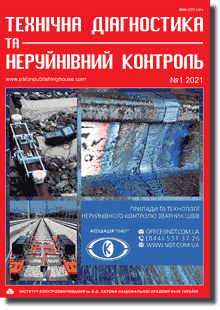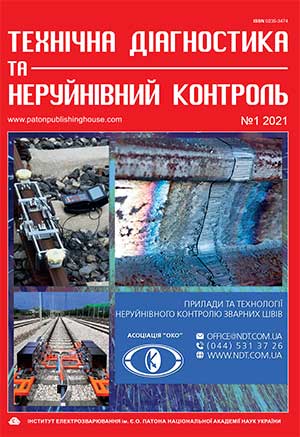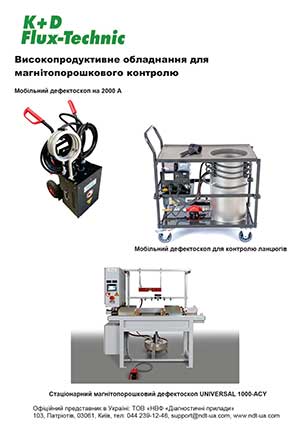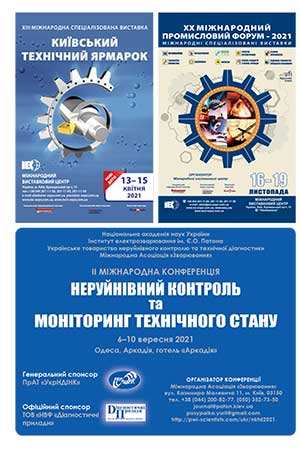| 2021 №01 (03) |
DOI of Article 10.37434/tdnk2021.01.04 |
2021 №01 (05) |

"Tekhnichna Diahnostyka ta Neruinivnyi Kontrol" (Technical Diagnostics and Non-Destructive Testing) #1, 2021, pp. 27-31
Control of technical condition of technological equipment of petroleum-processing productions in long-term service in hydrogen-containing working environment
V.O. Strizhalo, S.Z. Stasyuk
G.S. Pisarenko Institute for Problems of Strength of NASU 2, Timiryazevskaya Str., 01014, Kyiv. E-mail: stasiuk-ipp@i.ua
In order to improve reliable and safe operation of process equipment, whne degradation processes can run under under the impact of the dominating factor of damage – hydrogen corrosion of metal, we studied the impact of an environment with the content of 60 to 90 vol.% of hydrogen in a mixture with liquid or vapor-like hydrocarbons for 180000, 200000 and 245000 h on the changes of physico-mechanical properties of metal of pipelines from steel of 12CrMo19 5 grade (Germany) of reactor units in three catalytic reforming installations LG-35-11/300. Derived experimental data enabled giving practical recommendations on performance of pneumatic testing during revisions and inspections. The impact of sulphur-hydrogen enviroment on the processes of detruction of pertroleum eqipment tanks, namely hydrocarbon abosorber, hydrotreater separator and propane-butane tank is also considered in the work. It is shown that the subsurface hydrogen-induced cracking that is manifested as delamination of tank wall, is caused by absorption by metal structural defects (nonmetallic inclusions, discontinuities, etc.) of hydrogen formed at corrosion, which purposefully moves towards the site of initiation of maximum triaxial stresses under the impact of applied loads. Proceeding from accumulated experimental materials, the draft of DSTU «Technical diagnostics. Diagnosing and monitoring the technical condition of vessels and pipelines under the impact of aggressive working environment. General requirements» was developed. It is aimed at improvement of stable functioning of process equipment and lowering the probability of accidents or emergencies. Ref. 10, Fig. 5
Keywords: process pipelines, hydrogen corrosion, degradation processes, mechanical characteristics, hydrogen-sulphide environment, hydrogen-induced cracking, delamination, safe operating life, national standard
Received: 15.07.2020
References
1. (2017) Technical diagnostics of materials and structures: Refer. book. Ed. by Z.T. Nazarchuk. In: 8 Vol. Lviv, Prostir-M [in Ukrainian].2. Nelson, G.A. (1990) Steel for hydrogen service at elevated temperatures and pressures in petroleum refineries and petrochemical plants. Washington DC, API. Publ. 941.
3. Nechaev, Yu.S. (2008) Metallic materials for the hydrogen energy industry and main gas pipelines: Complex physical problems of aging, embrittlement, and failure. Uspekhi Fizicheskikh Nauk, 7, 681-697 [in Russian]. https://doi.org/10.1070/PU2008v051n07ABEH006570
4. Kryzhanivskyi, E.I., Ostash, O.P., Nykyforchyn, G.M. et al. (2016) Service degradation of structural materials. Vol. 1. Lviv, Prostir-M [in Ukrainian].
5. Kolachev, B.A. (1985) Hydrogen brittleness of materials. Moscow. Metallurgizdat [in Russian].
6. Archakov, Yu.I. (1985) Hydrogen corrosion of steel. Moscow, Metallurgiya [in Russian].
7. Wegst, C.W. (1995) Verlag Stahlschlussel GmbH, Dusseldorf.
8. GOST 550-75: Seamless steel tubes for petroleum processing and petrochemical industry [in Russian].
9. (1990) Corrosion resistance of chemical production equipment. In: Petroleum refining industry. Refer. book. Ed. by Yu.I. Archakov, A.M. Sukhotin. Leningrad, Khimiya [in Russian].
10. DSTU 8541:2015: High strength rolled steel. Specifications [in Ukrainian].




